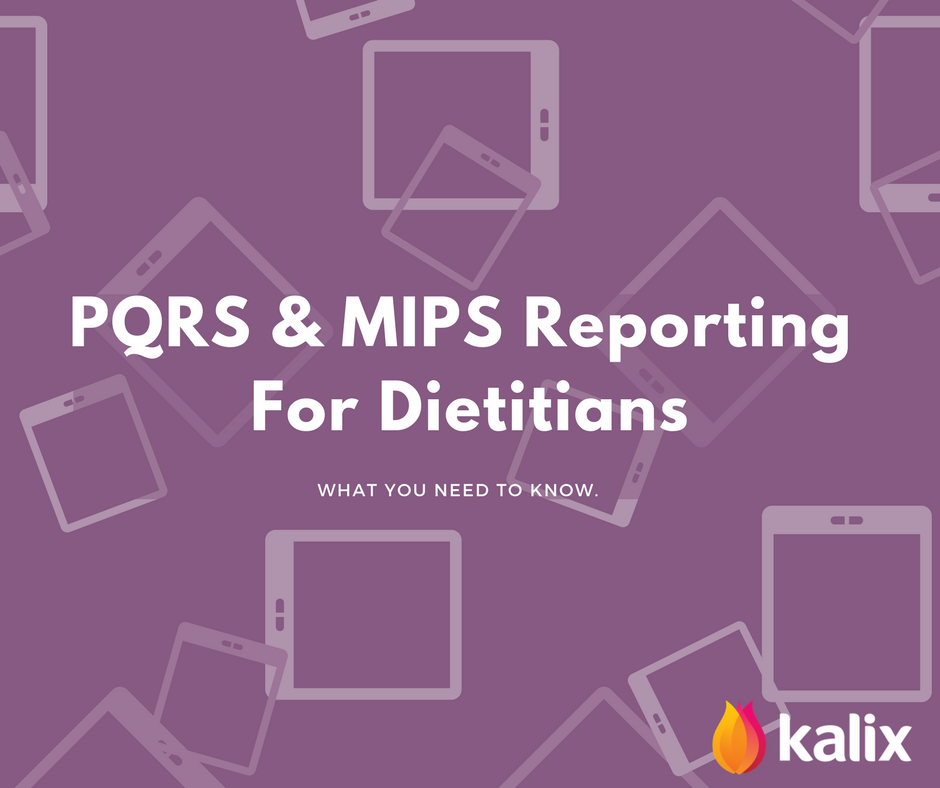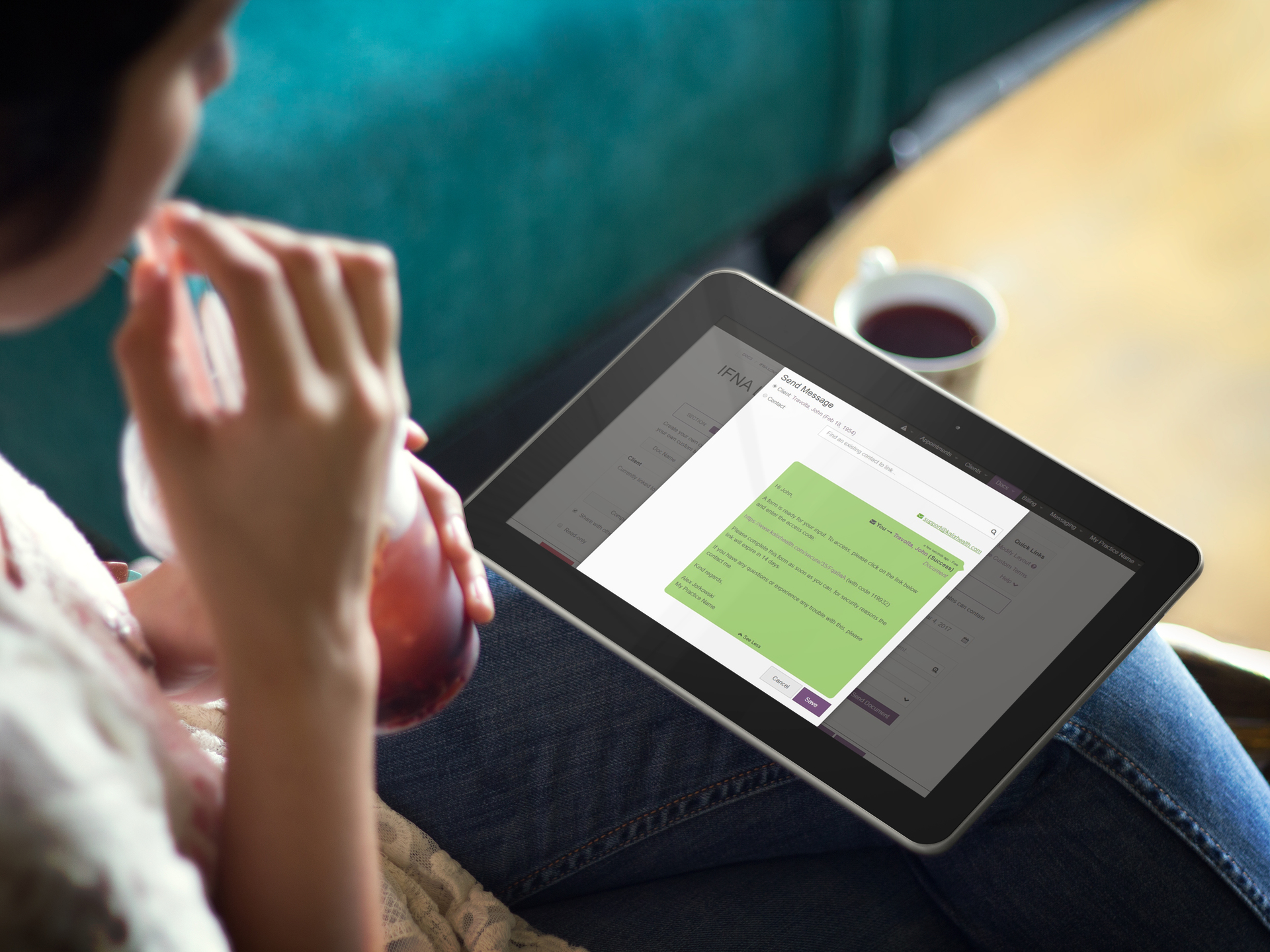The Physician Quality Reporting System (PQRS) was a quality reporting program by Medicare that applied to all Registered Dietitians (RDs) and other eligible professionals that received payments under Medicare Part B (via CMS 1500 claim forms). To encourage participation Medicare applied a negative payment adjustment (reductions) to all Medicare payments when non-compliance or unsatisfactory reporting occurred.
For the 2016 PQRS reporting period, Kalix was approved by Medicare as a Qualified Registry. To our knowledge, Kalix was the first and only Dietitian specific PQRS Registry.
PQRS is Dead, Long Live MIPS
The Physician Quality Reporting System (PQRS) ended in December 2016 and was replaced by Merit-Based Incentive Payment System (MIPS). MIPS has many similar aspects to PQRS, however, it a new system combining three different quality programs: Meaningful Use, PQRS, and Value-Based Payment Modifier programs. While Registered Dietitians were considered as eligible professionals under the PQRS program, they did not qualify for Meaningful Use or the Value-Based Payment Modifier program.
RDs Do Not Currently Qualify for MIPS
As a brand new program, MIPS has new eligible criteria. At least for 2017 and 2018, Registered Dietitians (RDs) are not considered eligible, click here for further details. There are yet be any announcements about whether the eligible clinician group will be extended for 2019 and beyond.

New Exclusion Criteria
Medicare is seeking to reduce the burden of MIPS program participation by the introduction of new exclusion criteria. Newly enrolled Medicare providers and clinicians with low volume threshold are currently excluded.

Voluntary Participation
CMS has stated that they will allow non-eligible providers i.e., RDs to participate in MIPS during the 2017 and 2018 reporting period on a voluntary basis (without any possible payment adjustments). Unfortunately, there is currently a lack of information about what voluntary participation looks like.
MIPS in a Nutshell
Medicare states that MIPS moves Medicare Part B clinicians to a performance-based payment system providing “clinicians with the flexibility to choose the activities and measures that are most meaningful to their practice.” MIPS performance activities are classified into four categories. Clinicians can select applicable activities from each category.

Quality (replaces PQRS)
Report up to 6 quality measures, including an outcome measure, for a minimum of 90 days. Quality Measures are the same as those included in PQRS 2016. Participation can be via claims, a qualified registry or a certified EHR system.
Cost (Replaces Value-Based Modifier)
No data submission required. Calculated from claims.
Improvement Activities (New category)
Complete up to 4 improvement activities for a minimum of 90 days. There is a list of close to 100 suggested improvement activities. Some examples are listed below:
- Engagement of patients through implementation of improvements in a patient portal
- Use of telehealth services that expand practice access
- Provide peer-led support for self-management
- Engagement of community for health status improvement
- Evidenced-based techniques to promote self-management into usual care
- Use group visits for common chronic conditions (e.g., diabetes)
- Practice improvements that engage community resources in supporting patient health goals
- Glycemic management services
- Implementation of practices/processes for developing regular individual care plans
- Implementation of specialist reports back to referring clinician or group to close referral loop
- Improved practices that disseminate appropriate self-management materials
- Enhanced practices that engage patients pre-visit
- Implementation of documentation improvements for practice/process improvements
Advancing Care Information (Replaces Meaningful Use)*
RDs have not been eligible to participate in Meaningful Use/ EHR Incentive Program in the past. Eligible professionals can choose to submit up to 9 measures via a certified EHR technology for a minimum of 90 days. Measures include:
- Security Risk Analysis
- E-Prescribing
- Provide Patient Access
- Send Summary of Care
- Request/Accept Summary of Care
- Clinical Data Registry Reporting
- Clinical Information Reconciliation
- Electronic Case Reporting
- Immunization Registry Reporting
- Patient-Generated Health Data
- Patient-Specific Education
- Public Health Registry Reporting
- Request/Accept Summary of Care
- Secure Messaging
*If considering voluntary participation, RDs may not need to submit data on these measures.
Predictions & The Future
There are yet be any announcements about whether the eligible clinician group will be extended to include Registered Dietitians in the future. Personally, I am hopeful for future participation. As a profession, we do not want to be excluded from MIPS forever. There could be serious financial implications for Medicare reimbursement rates for RDs in the future.
It is reassuring that voluntary participation by non-eligible clinicians is allowed for the next two years. CMS has also made changes to some of it’s MIPS component programs (i.e., Quality- replacing PQRS and Advancing Care Information – Replacing Meaningful use) to make them more flexibility and hence improving their applicability to non-physician healthcare professionals. I was also pleased to notice a change in CMS’s language, they are no longer referring to healthcare providers as physicians (i.e., Physician Quality Reporting System) but announced officially the use of the term “clinician” instead. This is much more of an inclusive word.
At Kalix, we are dedicated to ensuring our program meets all Medicare’s requirements for the future. We have made the decision to retire our PQRS Registry feature for this year (2017) so that we can concentrate on other new features and functionalities like Telehealth. Participation in the Quality component of MIPS can still be achieved for 2017 via Kalix’s claims and billing functionality. It is our goal that Kalix will have built-in MIPS functionality if (or when) RDs become a MIPS eligible profession.








